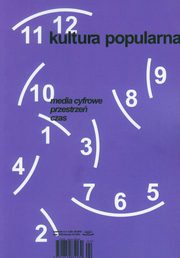Intertexts, Transtexts and Paratexts: Following the Yellow Brick Roads of Fin-de-siècle Children’s Fiction
Intertexts, Transtexts and Paratexts: Following the Yellow Brick Roads of Fin-de-siècle Children’s Fiction
Author(s): Matthew FreemanSubject(s): Social Sciences, Language and Literature Studies, Cultural history, Media studies, Studies of Literature, Communication studies, Other Language Literature, Sociology of Culture, Pre-WW I & WW I (1900 -1919), ICT Information and Communications Technologies
Published by: Szkoła Wyższa Psychologii Społecznej
Summary/Abstract: This article has explored some of the ways through which intertextuality manifested itself in the children’s fiction of the early twentieth century. I have demonstrated that to understand e Wonderful Wizard of Oz as a case of intertextuality means understanding it in the context of the industrial rise of mass production and the emergence of new printing technologies that allowed for these intertextual connections to be made. Coloured printing, advertising, printed maps, posters, and circulated reviews in newspapers and trade papers were just some of the key mechanisms exploited by author L. Frank Baum to expand his Oz stories into tapestries of intertextual, transtextual story threads that interwove across multiple novels and other media forms. Comprehending the historical roots of prominent theoretical concepts related to intertextuality – such as the work of Kristeva, Barthes, and Caselli – thus means re -framing and re -emphasising more practical developments towards industrialisation around the turn of the twentieth century. Historicising in this way may allow us more clearly and more fully to conceptualise something like intertextuality – using history to see how it emerged, how it manifests in different contexts, and indeed how it evolves across both media and history.
Journal: Kultura Popularna
- Issue Year: 47/2016
- Issue No: 01
- Page Range: 4-15
- Page Count: 12
- Language: English

